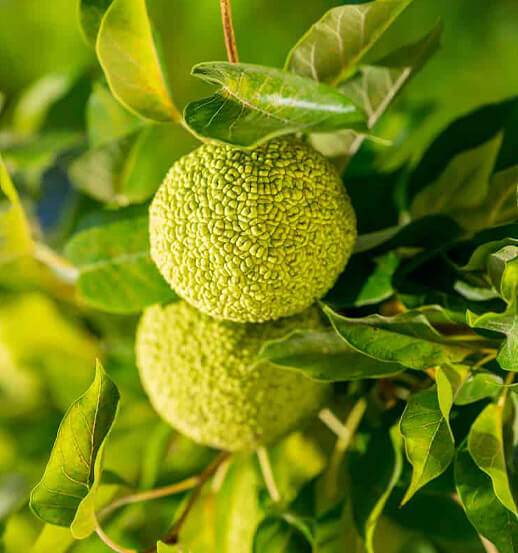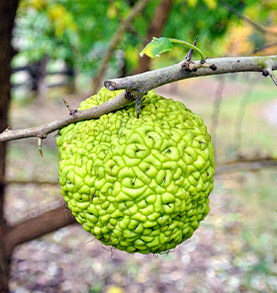

MACLURA PRODUCTS LLC
Located in Nicholasville, Kentucky USA
Proudly bringing you products made from the amazingly beneficial hedge apple
Researchers have known for many years what the Native Americans have known for centuries; Osage Orange aka hedge apples, have many beneficial medicinal uses. On-line searches for pomifera (It’s Latin name) and pomiferin benefits, will yield a plethora of information on these fruits.
Our company is committed to bringing you quality products made with hedge apples. Please check out what we’ve produced thus far.
About Pomiferin
Pomiferin was identified and named in 1939 by Melville L. Wolfrom from Ohio State University. In 1941, Wolfram classified pomiferin as an isoflavone and in 1946 published the complete structure of Pomiferin.
In recent research Pomiferin has demonstrated efficacy as an antioxidant, cardioprotectant, antimicrobial, antidiabetic, PDE5 inhibitor and cytotoxicity for several cancer cell lines.
Benefits of Pomiferin
Antioxidant: Pomiferin has shown antioxidant activity via inhibition of lipid peroxidation and the reduction of free radicals, reactive oxygen species and other unstable molecules. Tsao and Yang (2003) reported that Pomiferin was found to be a strong antioxidant, comparable to the vitamins C and E and the synthetic antioxidant BHT.
Cardioprotectant: Necas and Bartosíková (2007) reported that the chemical had potent cardioprotective effect on rat hearts subjected to ischemia and reperfusion injury. The mechanism for this protection may occur through the inhibition of lipid peroxidation.
Antimicrobial: Mahmoud (1981) indicated that pomiferin exhibited antibacterial activity against E. coli and Salmonella gallinarum, as well as Mycobacterium smegmatis to a lesser extent.
Antidiabetic: Bartosíková and Necas (2007), conducted a biochemical examination showing antidiabetic effects of pomiferin. Moon (2014) presented results of a study that evaluated the antidiabetic effect of osajin and pomiferin from the Osage orange in normal and streptozotocin-induced diabetic rats. Pomiferin in the streptozotocin-induced diabetic rats resulted in significant hypoglycemic activity for 14 days following, by decreased the serum glucose and triglycerides while increasing serum insulin in those rats.
PDE5 inhibitor: Ribaudo (2015) proposed pomiferin and osajin as potential lead compounds for the development, starting from natural scaffolds, of a new class of PDE-5A inhibitors with vasorelaxant properties to treat pulmonary hypertension and erectile dysfunction.
Anti-cancer activity: Svasti (2005) observed that pomiferin induced apoptosis and differentiation in cholangiocarcinoma cell line HuCCA-1. Son (2007) investigated the growth-inhibitory activity of pomiferin compared to SAHA (suberoylanilide hydroxamic acid). Pomiferin exhibited cytotoxicity effects on six cancer cells lines: Kidney (ACHN), Lung (NCI-H23), Prostate (PC-3), Breast (MDA-MB-231), Melanoma (LOX-IMVI) and Colon (HCT-15).
Source: https://en.wikipedia.org/wiki/Pomiferin
